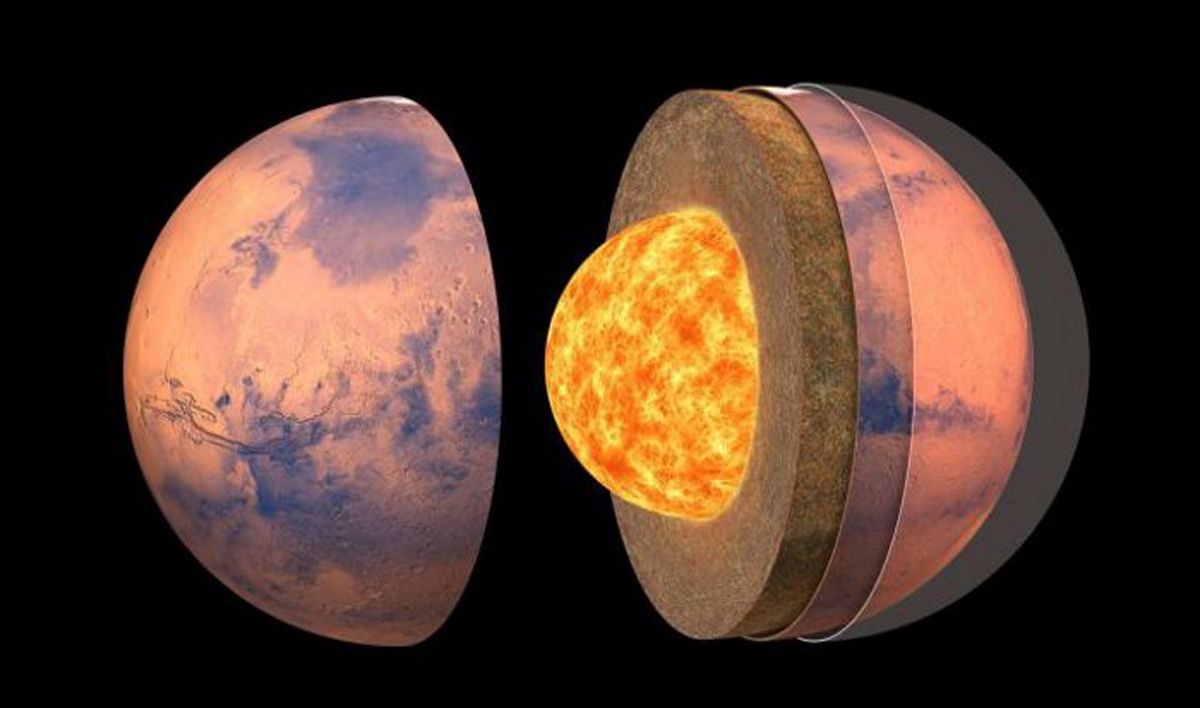In three new papers, scientists analyzed data from NASA’s InSight lander to reveal the structure of Mars and its crust, lithosphere, mantle, and core.

It has been an exciting week in the world of space science, with some revoluionary stories being published. Let’s look at the results from three separate papers released this week in the journal Science on the structure of Mars. The teams involved analyzed data from NASA’s InSight lander. Remember how we told you about how InSight’s seismometer detected hundreds of marsquakes? Similar to how we used earthquakes to understand the internal structure of Earth, these teams did the same for Mars.
First, scientists had to work based on the assumption that Mars might be similar to Earth, with a series of layers: the crust, the mantle, and the core. It’s a little more complicated than that, but it’s a good, basic starting point for understanding a planet’s structure. And as lead author Amir Khan explains: Now seismic data has confirmed that Mars presumably was once completely molten before dividing into the crust, mantle, and core we see today, but that these are different from Earth’s.”
Let’s start at the surface and work our way in. The crust under InSight, which is near the Martian equator, is between 15 and 47 kilometers thick, which is relatively thin compared to Earth where the crust can be up to 70 kilometers thick. It also means that the chemical composition of the rocks may be more radioactive than those here on Earth.
Under the crust is Mars’ mantle. Here’s where it got a bit interesting. Like Earth, Mars has a lithosphere at the top of its more plastic mantle. That lithosphere is twice as thick as that on Earth, ranging from 400 to 600 kilometers deep. Unlike Earth, Mars appears to only have one continental plate as opposed to Earth’s seven large ones and numerous smaller ones. This structure could explain why we don’t see signs of plate tectonics on Mars.
As for the composition of the mantle, the Martian mantle is similar to Earth’s upper mantle although it does seem to contain more iron.
Finally, we come to the core. No, not that terrible disaster movie from 2003, but the innermost layer of a planet. Researchers were able to use the seismic waves detected by InSight to calculate the size of the core, and per the press release: The Martian core has a radius of about 1,840 kilometers, making it a good 200 kilometers larger than had been assumed 15 years ago when the InSight mission was planned.
Co-author Simon Stähler goes on to explain: If the core radius is large, the density of the core must be relatively low. That means the core must contain a large proportion of lighter elements in addition to iron and nickel.
So within Mars’ core are lighter elements like sulfur, oxygen, carbon, and nitrogen. But that core is still liquid as researchers expected, which is a bit surprising given that Mars doesn’t have a magnetic field anymore.
InSight has done some amazing work, despite the failure of its drill. And we’re pretty sure there is more to come, which we will continue to bring you on the Daily Space.
More Information
- CNRS press release
- ETH Zürich press release
- IPGP press release
- University of Cologne press release
- NASA InSight Lander’s seismic observations reveal the interior of mars (EurekAlert)
- “Seismic detection of the martian core,” Simon C. Stähler et al., 2021 July 23, Science
- “Thickness and structure of the martian crust from InSight seismic data,” Brigitte Knapmeyer-Endrun et al., 2021 July 23, Science
- “Upper mantle structure of Mars from InSight seismic data,” Amir Khan et al., 2021 July 23, Science
This article originally appeared on Medium, July 27, 2021.





